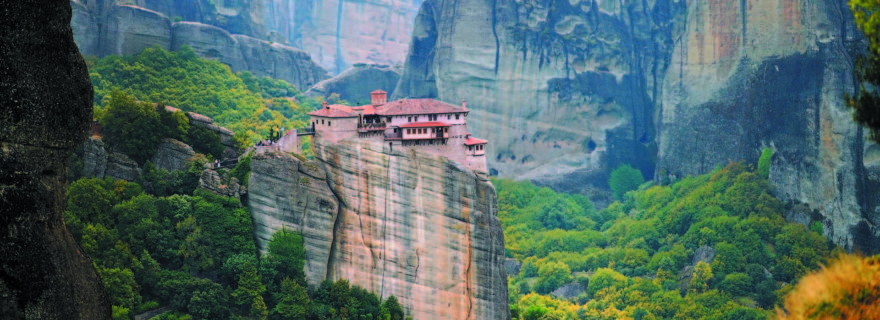HELLENIC PASCHA – Destinations / Experiences
At the northwestern edge of the Thessalian land between Pindos and Antichassia and above Kalambaka rise the stone giants of Meteora. UNESKO has designated them as a Preserved and Protected Monument of Humanity, and the Greek state as a sacred and inviolable site. In these huge rocks, monasticism began in the 11th century, when monks, ascetics left Agios Nikolaos and the monks of the monastery.
Mount to practice in the caves and the secluded rocky peaks. Slowly they built 26 monasteries, of which 15 others are renovated without monks and others are dilapidated. Nowadays there are six living monasteries that welcome the pilgrim hospitably in their monastery. They continue to exist unwaveringly
without interruption, for six hundred years, preserving the tradition and the
orthodox monastic ethos. In the 14th century, Hosios Athanasios the Meteorite from Patras founded the monastery of Great Meteor dedicated to the Transfiguration of the Saviour.
The main church is bright and full of hagiographies. The iconostasis is carved and gilded. The icons of the iconostasis belong to various
eras and are important for their art and antiquity. We will still be amazed to see the frescoes depicting the poet Homer, the historian Thucydides, the great philosopher Aristotle, the
Plato’s teacher and finally the historian Plutarch. There are similar frescoes in Megisti Lavra, Vatopedi and other churches in Greece that indicate a strong Greek-Christian tradition in Orthodoxy. Great is the contribution of the Monastery to the
Nation, our education and culture. For six hundred and fourteen years it has been a living monastic community, a true bastion of Christianity and the traditions of Hellenism. The monks strictly follow the rules and gather for about 6 hours
per day.
OPERATING HOURS
WARM 9.10 → 1.00 am.
3.20 → 6.00 pm.
Except Tuesday which remains closed
WINTER 9.00 → 1.00 pm
3.00 → 5.00 pm.
Except Tuesday and Wednesday which remains
closed



















